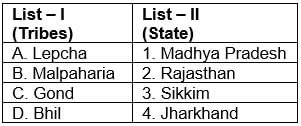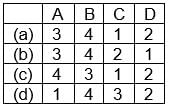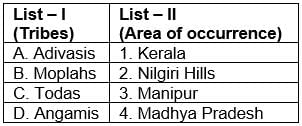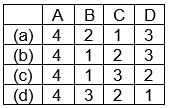Test: Population - 1 - UPSC MCQ
15 Questions MCQ Test - Test: Population - 1
Which factors influence the density distribution of population in India most profoundly?
1. Amount of rainfall
2. Fertility of soils
3. Distribution of minerals
4. Cultural factors
Which one of the Indian state/union Territories is having lowest sex ratio in 2011?
As per 2011 census data, the child sex ratio has come down from 927 to
What is the percentage of literacy in India, as per 2011 census data:
Which one of the following is the correct descending order of the three most populous states of India (2011)?
Match List-I with List-II and select the correct answer from the codes given below:

Codes:

Consider the following statements and select the correct answer
by using the codes given below:
Assertion (A): There has been some decline in the growth rate of
India’s population in recent years.
Reason (R): According to 2011 census, about 3/4 of Indian’s
the population is literate.
Codes:
Consider the following statements:
1. As per census 2011, the population growth rate of Nagaland
during 2001–2011 was the lowest among the states of India.
2. As per census 2011, the population growth rate of Dadra and
Nagar Haveli was the highest among the states of
India/Union territory.
Which of the statements given above is/are correct?
Arrange the following states in the descending order of literacy as per census report of 2011 and select the correct answer from the codes given at the end.
1. Kerala
2. Manipur
3. Tamil Nadu
4. Himachal Pradesh
Codes:
Consider the following specific stages of demographic transition associated with economic development:
1. Low birth rate with low death rate.
2. High birth rate with high death rate.
3. High birth rate with low death rate.
Select the correct order of the above stages using the codes given below:
Codes:
Which one of the following years is known as the ‘Year of the Great Divide’ with regard to population, after which there has been a continuous and rapid growth in India’s population?

















